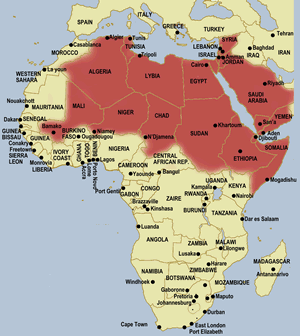Post by Ceratodromeus on Feb 4, 2017 4:06:36 GMT 5

Description
The deathstalker (Leiurus quinquestriatus), is a species of scorpion, a member of the Buthidae family. It is also known as Palestine yellow scorpion, Omdurman scorpion, Israeli desert scorpion and numerous other colloquial names, which generally originate from the commercial captive trade of the animal. To eliminate confusion, especially with potentially dangerous species, the scientific name is normally used to refer to them. The name Leiurus quinquestriatus roughly translates into English as "five-striped smooth-tail". Other species of the genus Leiurus are often referred to as "deathstalkers" as well.
L. quinquestriatus is yellow in color, and measures 30–77 millimeters (1.2–3.0 in) long, with an average of 58 mm (2.3 in).
Geographic range
L. quinquestriatus can be found in desert and scrubland habitats ranging from North Africa through to the Middle East. Countries where it lives include Algeria, Bahrain, Chad, Egypt, Ethiopia, Libya, Mali, Niger, Somalia, Sudan, Tunisia, Iraq, Israel, Jordan, Kuwait, Lebanon, Oman, Iran, Afghanistan, Pakistan, Qatar, Saudi Arabia, Syria, Turkey, Kazakhstan, United Arab Emirates, and Yemen.

Venom
The deathstalker is regarded as a highly dangerous species because its venom is a powerful cocktail of neurotoxins, with a low LD50. While a sting from this scorpion is extremely painful, it normally would not kill an otherwise healthy adult human. However, young children, the elderly, or infirm (such as those with a heart condition or those who are allergic) would be at much greater risk. Any envenomation runs the risk of anaphylaxis, a potentially life-threatening allergic reaction to the venom. If a sting from Leiurus quinquestriatus does prove fatal, the cause of death is usually pulmonary edema.
The German pharmaceutical company Twyford and the French pharmaceutical company Sanofi Pasteur both make an antivenom intended for the treatment of deathstalker envenomations; additionally, the Antivenom and Vaccine Production Center in Riyadh also produces an antivenom. However, even with antivenom treatment, envenomation by the deathstalker is considered a medical emergency as its venom is unusually resistant to treatment and typically requires large doses of antivenom.
In the United States and other countries outside of the typical range of the deathstalker, there is the additional complicating factor that none of the existing antivenoms are approved by the Food and Drug Administration (or equivalent agencies) and are only available as investigational drugs. The US Armed Forces maintains an Investigational drug (IND) application for the AVPC-Riyadh antivenom in the event of envenomation of soldiers in the Gulf War theater of operations, and the Florida Antivenin Bank maintains an IND application for Sanofi Pasteur's Scorpifav antivenom.
One component of the deathstalker's venom, the peptide chlorotoxin, has shown potential for treating human brain tumors. There has also been some evidence to show that other components of the venom may aid in the regulation of insulin and could be used to treat diabetes.
Neurotoxins in L. quinquestriatus venom include:
- Chlorotoxin
- Charybdotoxin
- Scyllatoxin
- Agitoxins type 1, 2 and 3
In captivity
They make hardy captives and feed readily on commercially available crickets. They tend to be a nervous and aggressive species, only recommended for the most experienced of arachnid keepers.
Original author
animaliaenthusiasts.proboards.com/user/3


